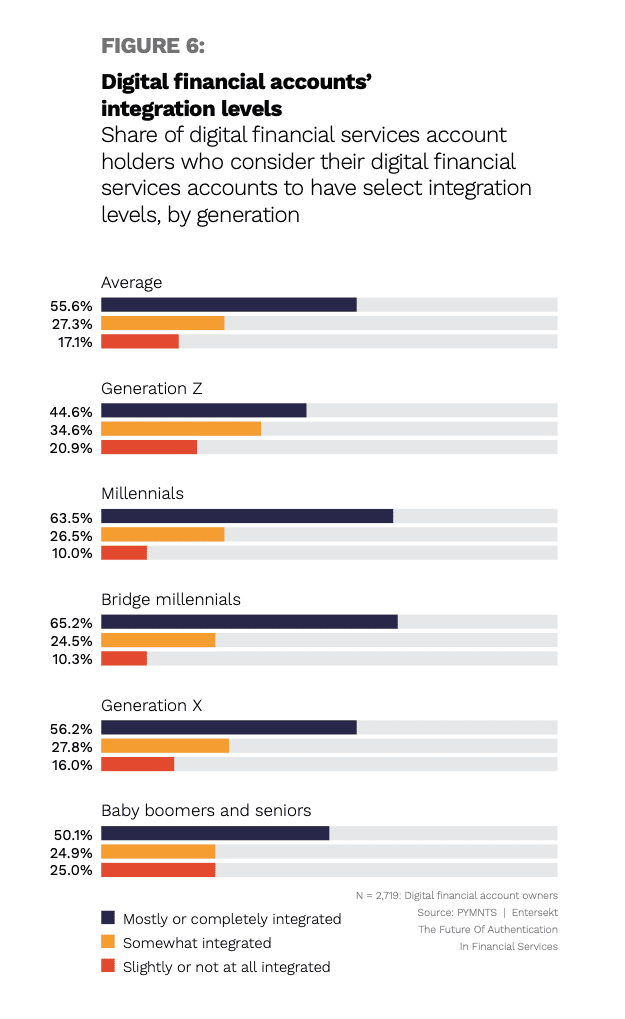
Consumers who use online accounts with their financial services providers access those accounts in a variety of ways — using computer browsers, mobile device applications, mobile device browsers or all of the above.
Thirty percent of consumers access their online accounts using computer browsers, and this remains the most regularly used way to view accounts, according to “The Future Of Authentication In Financial Services,” a PYMNTS and Entersekt collaboration.
Get the report: The Future Of Authentication In Financial Services
Twenty-nine percent of consumers use mobile device applications to access digital financial services accounts, while 17% use mobile device browsers.
A significant portion of consumers are more fluid in their account-accessing habits, with 25% of respondents saying they use multiple methods to access their bank accounts.

Fifty-six percent of consumers say their accounts are now mostly or completely integrated across different channels like these. That means these consumers generally find it easy to transact, make payments and see transaction histories across accounts and channels.
Another 27% of consumers say their accounts are somewhat integrated, while 17% say they are slightly or not at all integrated.
That means that nearly half of respondents say they experience services that are not highly integrated.

PYMNTS research also found that consumers who frequently use multiple channels to access their accounts are more likely than the average consumer to wish to see more integration from their providers.
By and large — with 56% of consumers saying they consider their digital financial services accounts to be mostly or completely integrated — most financial institutions seem to be hitting their targets.
As evidenced by their offering an even greater degree of integration than ever before, cross-channel integration has become table stakes for financial institutions.